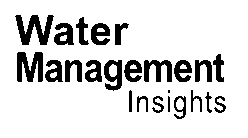In the sun-drenched landscapes of Ethiopia, a revolution is quietly brewing, one that could redefine the future of irrigation and energy sectors. At the heart of this transformation is the adoption of solar-powered irrigation pumps, a technology that promises to empower smallholder farmers and reshape the commercial landscape. A recent study, led by Muluken Elias Adamseged from the International Water Management Institute (IWMI) in Addis Ababa, sheds light on the pivotal role the private sector could play in this green revolution.
Adamseged’s research, published in the journal ‘Sustainable Futures’ (which translates to ‘Future Sustainability’), delves into the multifaceted aspects influencing the adoption and scaling of solar irrigation technologies in Ethiopia. The findings paint a picture of a market on the cusp of significant change, driven by the growing engagement of the private sector.
“The private sector’s continuous engagement with other key stakeholders has significantly improved users’ awareness of solar irrigation over the years,” Adamseged explains. This increased awareness is a crucial step towards market readiness, a term that encapsulates the willingness and ability of users to adopt new technologies.
However, the path to a solar-powered irrigation future is not without its challenges. Perceived risks, cost barriers, financial constraints, and the need for robust pre- and post-sales services remain significant hurdles. These challenges, if left unaddressed, could impede the growth of the private sector and the scaling of solar-powered pumps.
But where there are challenges, there are also opportunities. The study highlights that policy initiatives and the growth of the private sector can create enabling environments for technology adoption. This is where the energy sector comes into play. The scaling of solar-powered pumps could lead to a significant increase in demand for solar energy, presenting a substantial commercial opportunity for energy providers.
Moreover, the study’s systemic perspective offers valuable insights into the complex interplay of factors influencing the enabling environment. This holistic view could guide future developments in the field, helping stakeholders to navigate the challenges and seize the opportunities presented by solar irrigation technologies.
As Ethiopia stands on the brink of this green revolution, the question remains: will the private sector seize the opportunity to revolutionize the solar irrigation market? The answer could shape the future of irrigation and energy sectors, not just in Ethiopia, but across the globe. The study, with its in-depth analysis and thought-provoking insights, serves as a beacon, guiding the way forward in this exciting journey.
